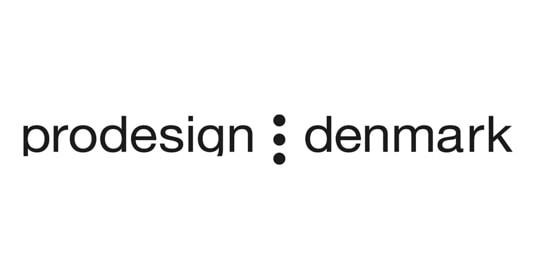Refractive errors can affect our vision in a variety of ways, and different refractive errors affect our eyes in different ways. Some errors affect our distance vision, making signs and other distant objects blurry, and some affect our close up vision, making it difficult to read books and menus. Some errors affect both our distance and close up vision, leaving our vision blurry at any distance.
In this article we will discuss the four most common refractive errors: hyperopia, myopia, astigmatism, and presbyopia.
Hyperopia
Hyperopia is more commonly known as “farsightedness”. As the name implies this refractive error allows you to see objects that are far away clearly, but makes your close up vision blurry. This happens because the eye’s lens is focusing light behind the retina, as oppose to on it. This usually happens because your eyeball is too short, or your cornea is not curved enough.
Signs and Symptoms
Patients with hyperopia have trouble concentrating and maintaining clear focus on close up objects. As such they may experience fatigue, headaches, squinting, or eye strain after doing close up work such as reading or writing.
Treatments
Hyperopia can be corrected by wearing prescription glasses or contact lenses, or by undergoing eye surgery. Eyeglasses are the simplest and least intrusive way to correct hyperopia, and are a good option for all patients. Contact lenses are a bit more difficult to use, but they can provide you with a better field of vision.
Refractive surgery (such as laser eye surgery) can permanently correct hyperopia by reshaping the cornea, eliminating the need for glasses or contact lenses.
However, contact lenses and laser eye surgery are not appropriate solutions for everyone. Talk to your eye care professional and find out which corrective solution is best suited for your needs.
Myopia
Myopia, also known as “nearsightedness”, is the most common refractive error. As the name implies this refractive error allows you to see objects that are close to you clearly, but makes it difficult for you to focus on distant objects. This happens because the eye’s lens is focusing light in front of the retina, as oppose to on it. This usually happens because your eyeball is too long, or your cornea is too curved.
Signs and Symptoms
Patients with myopia have trouble focusing on distant objects such as road signs but exhibit no problems when performing close up tasks such as reading or using the computer. They may experience fatigue, headaches, squinting, or eye strain when they try and see distant objects clearly.
Treatments
Myopia can be corrected by wearing prescription glasses or contact lenses, or by undergoing eye surgery. Eyeglasses are the simplest and least intrusive way to correct myopia, and are a good option for all patients. Contact lenses are a bit more difficult to use, but they can provide you with a better field of vision.
Refractive surgery (such as laser eye surgery) can permanently correct myopia by reshaping the cornea, eliminating the need for glasses or contact lenses.
However, contact lenses and laser eye surgery are not appropriate solutions for everyone. Talk to your eye care professional and find out which corrective solution is best suited for your needs.
Astigmatism
Astigmatism is one of the most commonly misunderstood vision problems, and comes in three different types: myopic, hyperopic, and mixed astigmatism. Astigmatism occurs when light fails to come to a single focus on your retina, which is required for you to have clear vision. Instead, light may focus unevenly on your retina, producing blurred vision at all distances.
Signs and Symptoms
Patients with an astigmatism experience blurred or distorted visions at all distances and may have trouble driving at night. They may also experience headaches, eye strain, or squinting.
Treatments
Like other refractive errors astigmatism can be corrected by wearing prescription glasses or contact lenses, or by undergoing eye surgery. Contact lenses are a bit more difficult to use, but they can provide you with a better field of vision.
Refractive surgery (such as laser eye surgery) can permanently correct astigmatism by reshaping the cornea, eliminating the need for glasses or contact lenses.
However, contact lenses and laser eye surgery are not appropriate solutions for everyone. Talk to your eye care professional and find out which corrective solution is best suited for your needs.
Presbyopia
Presbyopia is unlike any of the other refractive errors we have discussed. Instead of being the result of the length or shape of your eye, or the curvature of your cornea, presbyopia is a refractive error that occurs naturally with age.
As we grow older the proteins in the lenses of our eyes begin to change. These changes can cause the lenses to become harder and less elastic, making it difficult for the eye to focus on close up objects.
Signs and Symptoms
Patients with presbyopia often have trouble reading small print and seeing objects that are close to them. To compensate they may hold reading material and other objects far away in order to examine them. They may also experience headaches and eye strain.
Treatments
Presbyopia is treated using specially designed eye glasses. These glasses are designed so that they have a higher focusing power on the lower portion of the lense, allowing you to read through the lower portion of the lens without your distance vision being affected. Presbyopia can also be corrected using off-the-shelf reading glasses, which do not require a prescription.
Quick Reference Chart
| Hyperopia | Myopia | Astigmatism | Presbyopia | |
|---|---|---|---|---|
| Close up vision is blurry | X | |||
| Distance vision is blurry | X | |||
| Vision is blurry at all distances | X | |||
| Headaches, eye strain, and fatigue | X | X | X | X |
| Trouble with nighttime driving | X | |||
| Must hold objects far away in order to see them clearly | X |










